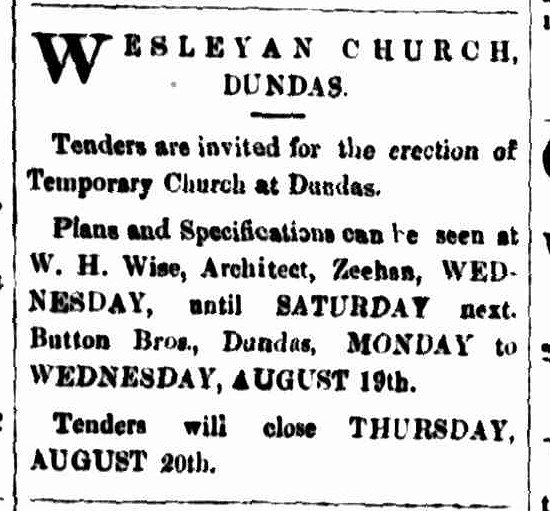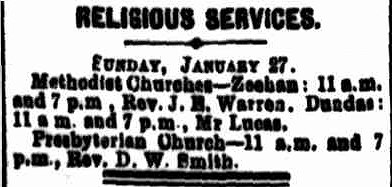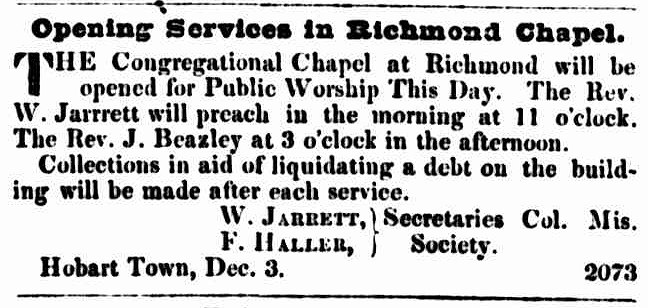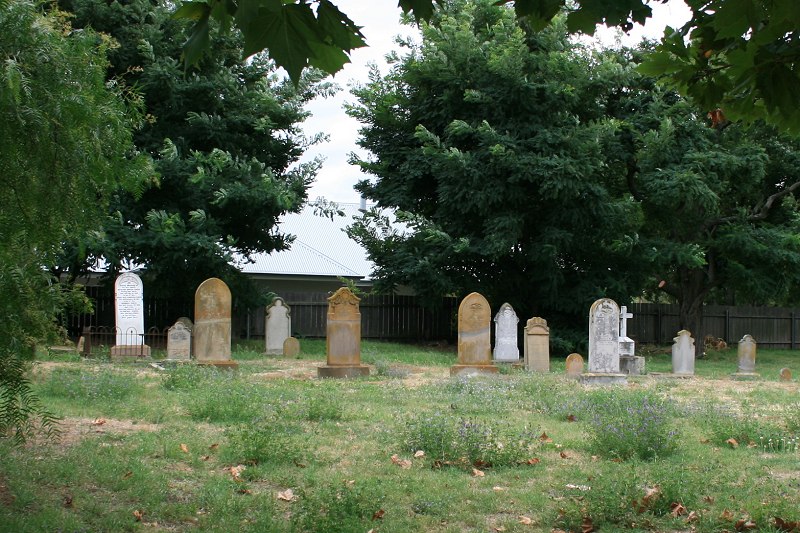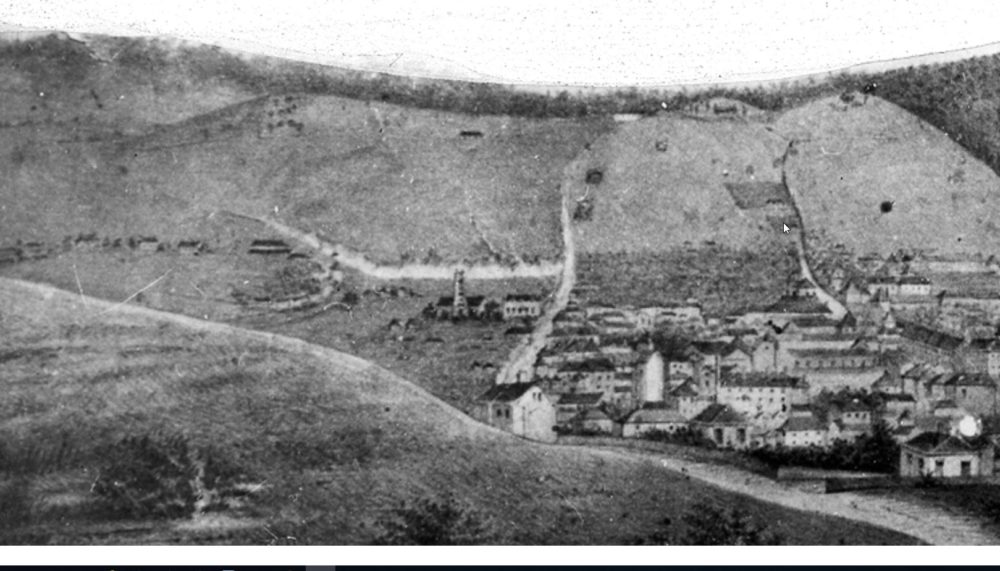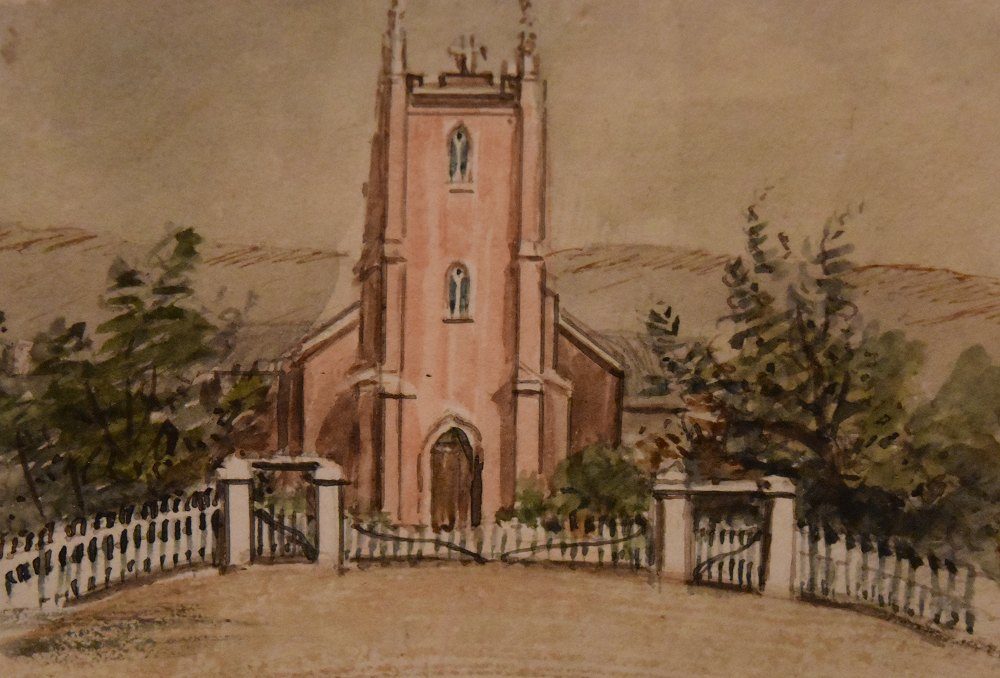Anglican services were first held in other buildings. The town formed about 1890, so the advertised service below, in July 1891, could well be the first one held. A church, St David’s, was opened in 1912. There is nothing left of the town now.
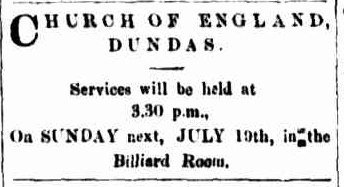
Zeehan and Dundas Herald, 17 July 1891

Zeehan and Dundas Herald, 11 September 1891
It is advertised that a Sunday School will be held at Dundas in connection with the Church of England, Mr Waters having lent his hill for the purpose, Sunday afternoon services have been held at Dundas for some time, and it is now thought opportune to open a Sunday School.
Zeehan & Dundas Herald, 25 January 1896
The Lord Bishop of Tasmania (Dr. Mercer, D.D.) arrived at Zeehan on Saturday, and in the afternoon conducted a confirmation service at St. Luke’s Church, at which there were 11 candidates— 3 females and 8 males. Yesterday morning he preached to a large congregation at St. Luke’s, and in the afternoon drove over to Dundas, where he held service in the new church. The building was well-filled, largely by men, and the Bishop’s address listened to with the closest attention. It had been intended that the Bishop should dedicate this building, but as its construction was not quite completed, this service was postponed, and will probably be conducted by Archdeacon Richard at an early date. The name of the new church is to be St. David’s.
Zeehan & Dundas Herald, 18 December 1911
DUNDAS
The Ven. Archdeacon of Darwin held the first service at St. David’s, Dundas, by a celebration of the Holy Communion at 8.45 a.m. on Sunday, 31st December, and afternoon service at 3 p.m., when the church was filled to its utmost capacity. The Archdeacon firstly gave an address to the children, impressing on them the similarity of the Church of Jesus Christ to a ship which many of the younger folk had seen provisioned and equipped for a long journey; afterwards the Archdeacon gave an earnest address to the men and women, pointing out the moral effect of a good wife and mother to the community, stating he thanked his mother for teaching him to load a good life. The address was listened to very attentively. Si. David’s Church, Dundas, supplies & long felt want, and will when completed be very compact. One cannot say too much in praise of the energy which has directed the proceedings. The organ was received on Saturday last, general satisfaction being expressed at its tone, the Archdeacon playing the hymns at both services, everyone joining heartily in the singing.
Zeehan & Dundas Herald, 2 January 1912

